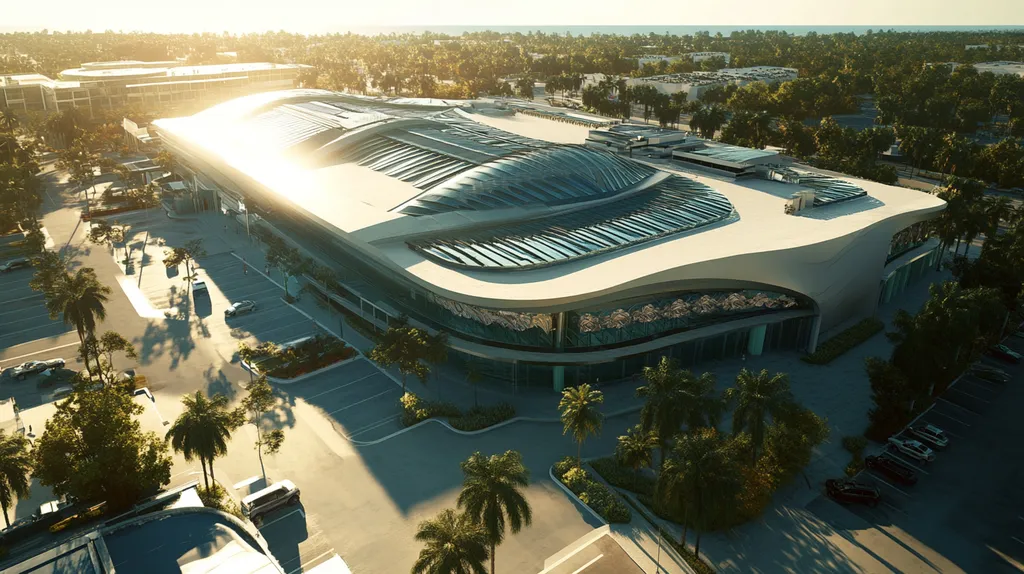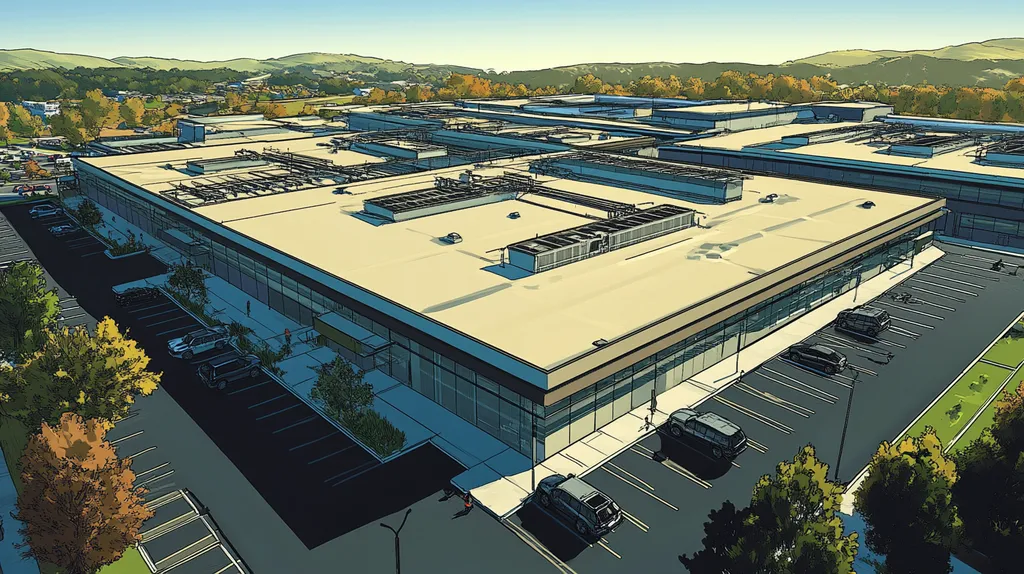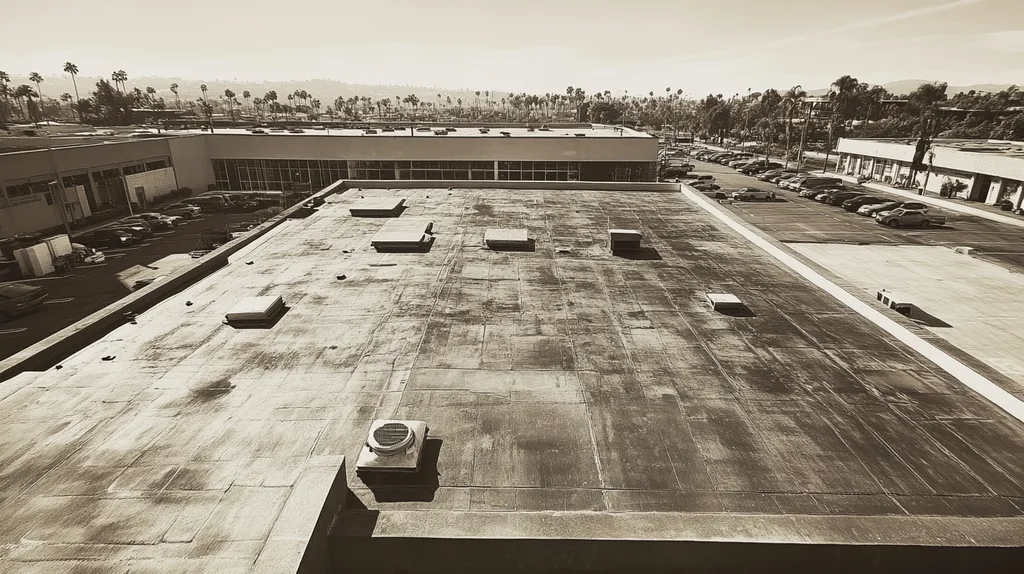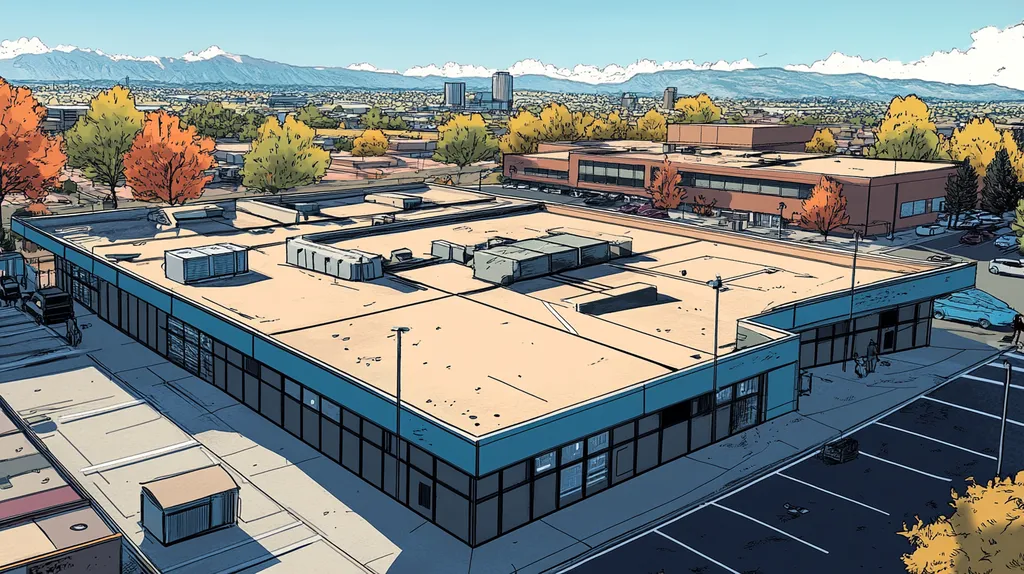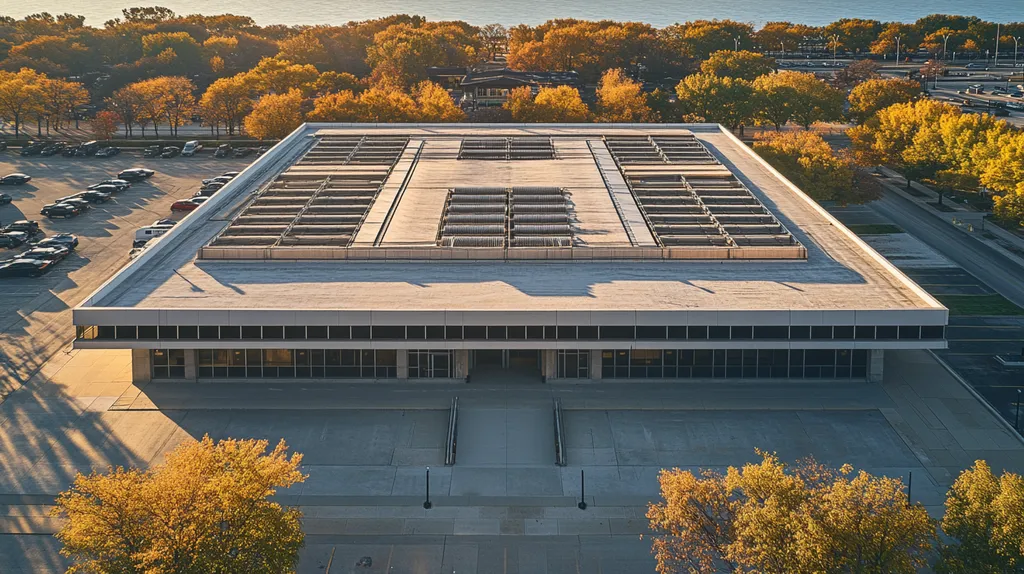Welcome to today’s Battle Royale featuring two roofing heavyweights: “TPO Flashings” in the east corner versus “PVC Flashings” in the west!
Tonight’s showdown pits these contenders against each other across six punishing rounds designed to test every aspect of their performance for industrial roof flashing compatibility issues.
At stake? Millions in potential costs, decades of building protection, and the critical performance demands of modern commercial and industrial facilities.
Our professional judging panel will evaluate each round on technical merit, real-world performance, and value delivery. After all six rounds, we’ll declare our ultimate champion.
Ladies and gentlemen, facility managers and building owners… it’s time to rumble!
ROUND 1: INITIAL COSTS & INSTALLATION
Cost considerations in industrial roofing extend far beyond initial material expenses. With roof flashing failures accounting for over 60% of commercial roof leaks, selecting the right system becomes crucial for long-term facility protection. Understanding the total investment – from materials to installation complexity and project duration – helps facility managers make informed decisions that protect both their buildings and budgets.
Material Expenses
TPO flashings typically cost 15-20% less per square foot than their PVC counterparts, making them initially attractive for budget-conscious projects. However, this upfront savings must be weighed against material longevity and performance requirements.
PVC flashings demonstrate superior chemical resistance and UV stability, resulting in fewer replacement cycles over the building’s lifetime. Their enhanced durability and resistance to environmental stress make them particularly valuable in industrial settings with harsh conditions.
While TPO offers immediate cost benefits, PVC’s extended service life and reduced replacement frequency provide better long-term value. Taking lifecycle costs into account, PVC earns an “ADVANTAGE” in material expenses.
Installation Complexity
TPO flashing installation requires precise temperature control during heat welding and careful attention to detail at corners and transitions. These technical demands often lead to longer installation times and increased labor costs.
PVC flashings feature more forgiving installation parameters and wider welding temperature ranges. Their superior flexibility allows for easier manipulation around complex roof penetrations and better accommodation of building movement.
The simpler installation process of PVC reduces both labor costs and the risk of installation errors. This operational efficiency gives PVC flashings a clear “ADVANTAGE” in installation complexity.
Project Timeline
TPO flashing projects typically require additional time for precise temperature monitoring and multiple quality control checks during installation. Weather conditions can also significantly impact installation schedules due to stricter welding requirements.
PVC installations generally progress more quickly due to their wider installation temperature range and easier workability. This efficiency translates to shorter project durations and reduced facility disruption.
The faster completion times and reduced weather sensitivity of PVC installations result in more predictable project schedules, earning PVC another “ADVANTAGE” in timeline management.
ROUND 1 WINNER: PVC Flashings
ROUND 2: DURABILITY & LIFESPAN
In industrial roofing, the durability and lifespan of flashing materials directly impact facility protection and maintenance costs. With improper flashing accounting for nearly 80% of premature roof failures, selecting materials that withstand environmental stresses becomes crucial for long-term building integrity.
Understanding the performance characteristics of TPO and PVC flashings under real-world conditions helps facility managers make decisions that protect their assets for decades to come.
Resistance to Environmental Factors
TPO flashings demonstrate exceptional resistance to UV radiation and heat aging, maintaining their structural integrity even after prolonged exposure. Their molecular structure provides superior protection against thermal shock and extreme temperature fluctuations common in industrial environments.
PVC flashings excel in chemical resistance but can become brittle when exposed to prolonged UV radiation. While they handle industrial pollutants well, their physical properties may degrade faster than TPO in high-temperature environments.
TPO’s superior weathering characteristics and thermal stability give it a clear “ADVANTAGE” in environmental resistance.
Material Longevity
TPO flashings maintain their flexibility and weldability throughout their service life, typically lasting 20-25 years with proper maintenance. Their resistance to surface oxidation and chemical degradation helps preserve their protective properties over time.
PVC flashings generally offer a 15-20 year service life but may require earlier replacement in areas with intense sun exposure or extreme temperature cycles. Their performance can decline more rapidly if exposed to certain industrial chemicals or petroleum products.
The extended service life and sustained performance of TPO flashings earn them an “ADVANTAGE” in material longevity.
Maintenance Requirements
TPO flashings typically require minimal maintenance beyond routine inspections and basic cleaning. Their resistance to biological growth and surface contamination reduces the need for intensive maintenance procedures.
PVC flashings often need more frequent cleaning and may require specialized maintenance to address issues like plasticizer loss and surface chalking. Their maintenance demands increase in environments with high chemical exposure or temperature extremes.
The lower maintenance burden of TPO flashings results in another clear “ADVANTAGE” for this round.
ROUND 2 WINNER: TPO Flashings
ROUND 3: PERFORMANCE FACTORS
Performance factors in industrial roof flashings directly impact facility protection and operational continuity. When flashing systems fail, water infiltration can lead to equipment damage, production delays, and costly repairs. Understanding how TPO and PVC flashings perform under real-world conditions helps facility managers protect both their buildings and business operations.
Durability Under Weather Conditions
Industrial roof flashings must maintain their integrity under extreme weather conditions and temperature fluctuations. The molecular structure of TPO flashings provides excellent resistance to UV radiation and thermal cycling, helping prevent premature degradation and brittleness.
PVC flashings demonstrate superior chemical resistance and fire-retardant properties. However, their performance can decline more rapidly in environments with prolonged UV exposure or extreme temperature variations.
While both materials offer solid weather resistance, TPO’s superior UV stability and thermal performance earn it the ADVANTAGE in this category.
Resistance to Physical Damage
The installation tolerances and dimensional stability of flashing materials significantly impact their ability to withstand physical stress. TPO flashings maintain consistent performance even when subjected to building movement and structural settling. (source: International Institute of Building Enclosure Consultants)
PVC flashings can become more brittle over time, making them more susceptible to damage from foot traffic and mechanical impacts. Their reduced flexibility in cold temperatures can also lead to cracking under stress.
Given its superior resilience and consistent performance under physical stress, TPO earns the ADVANTAGE in damage resistance.
Longevity and Maintenance Needs
Long-term performance depends heavily on a flashing system’s ability to maintain its protective properties over time. TPO flashings typically retain their flexibility and weldability throughout their service life, requiring minimal maintenance beyond routine inspections.
PVC flashings often need more frequent maintenance to address issues like plasticizer loss and surface deterioration. Their seams may require more regular inspection and occasional repair to prevent water infiltration.
The lower maintenance requirements and sustained performance of TPO flashings give them the ADVANTAGE in this category.
ROUND 3 WINNER: TPO Flashings
ROUND 4: MAINTENANCE REQUIREMENTS
Maintenance requirements can make or break a roofing system’s long-term performance and cost-effectiveness. With up to 80% of premature roof failures linked to inadequate maintenance, choosing flashing materials with appropriate maintenance profiles becomes critical for facility longevity. Using incompatible or high-maintenance materials can lead to significant water damage and costly emergency repairs.
Regular Inspection Requirements
TPO flashings typically require quarterly visual inspections to check for physical damage and seam integrity. Their uniform surface makes identifying potential issues straightforward, while their material stability means fewer false alarms during inspections.
PVC flashings demand more frequent inspections, particularly around seams and transitions. Their tendency to show early signs of UV degradation necessitates closer monitoring, especially in areas with high sun exposure.
Given the reduced inspection frequency and simpler assessment criteria, TPO flashings earn an ADVANTAGE in inspection requirements.
Repair Procedures
Using the wrong material for commercial roof flashing can lead to failure and water leaks through the roof, making proper repair procedures essential. TPO flashings offer straightforward repair protocols that can often be completed with standard tools and materials. (source: Jobs-AMST)
PVC flashing repairs frequently require specialized welding equipment and precise temperature control. Their chemical composition makes patches more challenging to bond effectively, increasing repair complexity and cost.
The simplified repair requirements and better material compatibility of TPO flashings secure another ADVANTAGE in this category.
Long-term Maintenance Costs
TPO flashings demonstrate excellent cost efficiency in long-term maintenance. Their resistance to environmental degradation and simpler repair requirements translate to lower ongoing maintenance expenses.
PVC flashings often incur higher maintenance costs due to more frequent inspection needs and complex repair procedures. Their specialized maintenance requirements can significantly impact facility maintenance budgets.
The reduced long-term maintenance costs of TPO flashings earn them a clear ADVANTAGE in this category.
ROUND 4 WINNER: TPO Flashings
ROUND 5: SUSTAINABILITY CREDENTIALS
Environmental responsibility in commercial roofing has become a critical business imperative, with flashing material choices directly impacting a facility’s sustainability profile. Improper flashing selection can compromise both environmental performance and regulatory compliance, especially as more jurisdictions implement strict sustainability requirements.
Environmental Impact
Flashing materials must meet increasingly stringent environmental standards while maintaining performance integrity. Improper termination design, workmanship, or material selection can lead to premature failure and increased environmental waste. (source: Roofing Contractor)
TPO flashings offer significant environmental advantages through their clean manufacturing process and minimal chemical additives. Their highly reflective surface reduces building cooling loads, contributing to decreased energy consumption and carbon emissions.
PVC flashings require more energy-intensive production processes and contain chemical plasticizers that can impact environmental quality. While they provide excellent performance, their manufacturing footprint exceeds that of TPO alternatives.
TPO’s lower environmental impact and energy-saving properties earn it the ADVANTAGE in this category.
Material Life Cycle
The total environmental impact of flashing materials extends from production through disposal. TPO flashings demonstrate excellent durability with minimal degradation, reducing replacement frequency and associated waste.
Their molecular stability helps maintain performance characteristics throughout their service life, preventing premature disposal. TPO’s resistance to environmental stressors extends useful life while reducing maintenance-related resource consumption.
PVC flashings can experience accelerated aging in certain environments, potentially shortening their effective lifespan. Their maintenance requirements often involve chemical cleaners and treatments that carry additional environmental implications.
The superior life cycle performance of TPO flashings secures another ADVANTAGE in this category.
Recyclability Potential
End-of-life management significantly impacts a material’s overall environmental footprint. TPO flashings can be effectively recycled into new construction materials, supporting circular economy initiatives.
Their chemical composition allows for straightforward recycling processes without special handling requirements. Many manufacturers now offer take-back programs specifically designed for TPO material recovery.
PVC flashings present greater recycling challenges due to their chemical additives and potential contamination concerns. Their disposal often requires specialized handling to prevent environmental impact.
TPO’s superior recyclability and simpler end-of-life management earn it the ADVANTAGE in this category.
ROUND 5 WINNER: TPO Flashings
ROUND 6: SPECIALIZED APPLICATIONS
Specialized industrial roofing applications present unique challenges that can make or break a facility’s weatherproofing system. With complex penetrations and varying exposure conditions accounting for 85% of industrial roof failures, selecting appropriate flashing materials becomes critical. The wrong choice can lead to premature system failure, costly repairs, and potential disruption to facility operations.
Chemical Resistance Requirements
Industrial environments often expose roofing systems to harsh chemicals, acids, and industrial byproducts that can rapidly degrade standard materials. TPO flashings demonstrate moderate chemical resistance but can show signs of deterioration when exposed to petroleum-based substances or strong industrial solvents.
PVC flashings excel in environments with chemical exposure, offering superior resistance to acids, bases, and industrial pollutants. Their molecular structure remains stable even under prolonged contact with harsh industrial chemicals.
For facilities with significant chemical exposure risks, PVC flashings earn a clear ADVANTAGE in this category.
High-Temperature Applications
Industrial processes often generate significant heat that can stress roofing materials beyond their design limits. TPO flashings maintain their structural integrity up to 275°F but can show signs of softening and dimensional instability at sustained high temperatures.
PVC flashings demonstrate exceptional stability in high-temperature environments, with superior resistance to heat aging and thermal shock. Their formulation allows them to maintain performance characteristics even when exposed to elevated temperatures from industrial processes.
The superior heat resistance and stability of PVC flashings earn them another ADVANTAGE in this category.
Complex Penetration Details
Modern industrial facilities often require numerous roof penetrations for equipment mounting, ventilation systems, and process piping. Fluid-applied flashings offer exceptional flexibility and adhesion for complex penetrations, providing seamless protection against water infiltration. (source: Polyglass)
TPO flashings can be challenging to form around irregular shapes and may require extensive custom fabrication. Their limited flexibility can complicate installation around complex geometries.
PVC flashings offer superior workability and can be easily formed to accommodate irregular shapes and tight radiuses. Their enhanced flexibility and weldability make them ideal for complex penetration details.
The superior formability and detail adaptation of PVC flashings secure another ADVANTAGE in this category.
ROUND 6 WINNER: PVC Flashings
AND THE WINNER IS…
After six grueling rounds of technical evaluation, we have our verdict…
Ladies and gentlemen, with a dominant 4-2 victory, your new Industrial Roof Flashing champion is… TPO FLASHINGS!
TPO secured its victory through superior performance in environmental resistance, maintenance efficiency, and sustainability credentials. Its combination of durability, cost-effectiveness, and lower maintenance requirements proved devastating in rounds 2 through 5.
But don’t count PVC out completely! This veteran contender showed its championship pedigree in specialized applications, particularly in environments with harsh chemical exposure and complex penetrations. When facing extreme industrial conditions or high-temperature challenges, PVC remains a formidable choice.
Remember, champions: Every facility brings its own unique requirements to the ring. Local climate conditions, building characteristics, and specific industrial processes all play crucial roles in determining the ideal flashing system for your property. While this analysis provides valuable insights, consultation with qualified roofing professionals remains essential for evaluating your specific situation.
In the high-stakes arena of industrial roofing, there’s no substitute for making an informed choice. Because when it comes to protecting your facility, choosing the right flashing contender isn’t just about winning a match – it’s about securing your building’s long-term championship performance.
FREQUENTLY ASKED QUESTIONS
Q. What are initial costs for commercial roof flashing options?
A. Cost considerations extend beyond material expenses; installation complexity and project duration affect total investment. TPO flashings may be cheaper up front but could lead to higher long-term costs when accounting for potential failures. PVC flashings, although more expensive initially, offer better performance and durability.
Q. How do TPO and PVC flashings compare in durability?
A. Durability is crucial for protecting your industrial roof. TPO flashings generally outperform PVC in resistance to UV exposure, maintaining flexibility over their lifespan. PVC may fail earlier under similar environmental conditions. Understanding these characteristics helps in making effective maintenance decisions for your facility.
Q. Which flashing performs better under extreme weather for industrial roofs?
A. In severe weather, TPO flashings provide superior UV resistance and thermal stability. Although PVC has excellent chemical resistance, it degrades faster when exposed to prolonged sun and temperature fluctuations. Selecting the right material can significantly enhance your building’s protection against the elements.
Q. What are the long-term maintenance needs for commercial roof flashing?
A. TPO flashings generally require less maintenance than PVC due to their inherent durability. Routine inspections and cleaning help maintain TPO, while PVC needs more frequent checks and specialized maintenance to combat deterioration. Understanding these needs aids in effective facility management and cost control.
Q. How do TPO and PVC flashings impact sustainability in commercial roofs?
A. TPO flashings are more environmentally friendly due to their manufacturing process and lower impact. They help reduce energy consumption, whereas PVC involves more intensive energy use and chemical additives. Sustainability considerations are vital, especially for businesses seeking green certifications and compliance with regulations.
Q. Which flashing type handles specialized applications better?
A. PVC flashings excel in specialized applications requiring extensive chemical resistance and adaptability. TPO struggles in environments with harsh chemicals but still performs adequately in many standard situations. Evaluating your facility’s unique needs and potential exposures can inform the best flashing material choice.
Q. How do installation costs compare for commercial roof flashings?
A. TPO flashings typically require careful temperature control during installation, leading to longer project timelines. PVC flashings feature simpler installation parameters, resulting in lower labor costs and quicker project completion. Assessing installation complexity can significantly affect your overall budget and operational efficiency.

